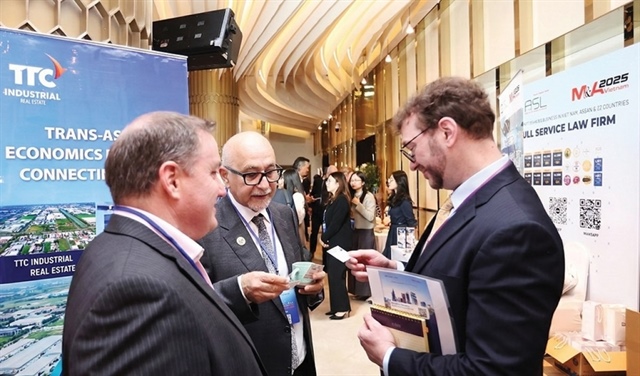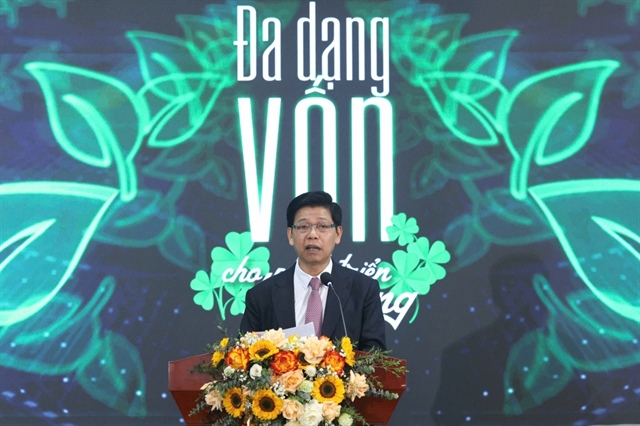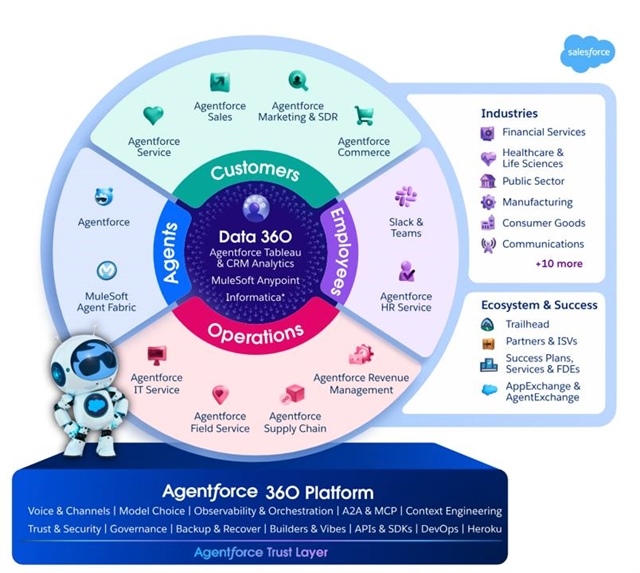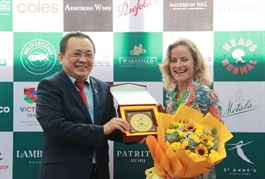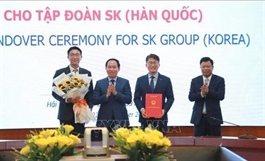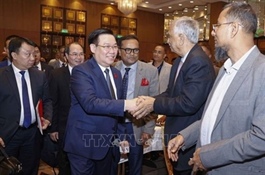CMSC navigates reforms and challenges at SOEs
CMSC navigates reforms and challenges at SOEs
Vietnam's Commission for Management of State Capital at Enterprises (CMSC) is driving economic stability and growth, steering 19 major state-owned enterprises with strategic plans. However, the journey is fraught with challenges.

In Vietnam’s quest for economic prosperity, the Commission for Management of State Capital at Enterprises (CMSC) stands out as a sentinel overseeing the ownership in 19 pivotal state-owned enterprises (SOEs), each playing diverse roles across 16 varied sectors.
According to Phan Van Son, director of General Department at the CMSC, the journey, while dotted with accomplishments, has many challenges.
“The commission acts as a dedicated agency, symbolising state ownership in enterprises, rendering them guardians of state assets,” said Son.
According to Son’s presentation at VIR’s seminar titled 'Looking Back and Moving Forward' on September 26, by 2022, these 19 SOEs have witnessed a surge in their consolidated total capital and assets, touching $48.7 billion and $105.2 billion respectively, reflecting a substantial 63 per cent of total state ownership capital and 65 per cent of the total assets of state-owned enterprises across the nation.
Navigating economic stability in unsettling times
Since the inception of Decree No.131/2018/ND-CP in September 2018 on defining functions, tasks, powers and organisational structure of the CMSC, the committee has striven to leverage every opportunity, navigate through the multifaceted obstacles, and fulfil their responsibilities with commendable precision and effectiveness.
Son said, “After the transition to the commission, 19 SOEs have showcased transparency and stability in their operations, optimising state benefits and limiting the loss of state assets, despite the unprecedented and tumultuous circumstances posed by the pandemic and several other national and international complexities.”
Post-2018, the transitional phase to the committee saw a significant upswing in the consolidated total ownership capital and assets of the conglomerates and corporations involved.
Son said, “In 2022, the consolidated total revenue alone scaled to approximately $78.9 billion, contributing a substantial 20 per cent to the country’s GDP - 0.6 per cent hike since 2018.”
With groups like Vietnam Oil and Gas Group (PetroVietnam) and Vietnam National Coal - Mineral Industries Group (Vinacomin) achieving unparalleled revenues since their establishment, the progress is palpable.
These SOEs play a crucial role in social security, creating employment opportunities with sustainable income levels, outpacing the national average, particularly during the ramifications of the pandemic, thereby upholding socio-political responsibilities and mandates effectively.
Investment projects and developmental plans
In the ensuing five years under the commission’s stewardship, a myriad of projects across various sectors have been initiated, implemented, and brought to fruition.
“The commission has approached the government and corresponding authorities to mitigate the impediments in policy and legal frameworks, facilitating a plethora of investment projects,” Son said.
A selection of these pivotal projects is accelerating at an unprecedented pace, shining a light on the commission’s active role in developmental pursuits.
Particularly, the last five years have marked a transformative phase for 19 conglomerates and corporations, witnessing the approval, deployment, and completion of 185 ‘Group A’ projects and 455 ‘Group B’ projects.
Between 2018 and 2023, the commission, in tandem with various entities, has spearheaded developmental investment plans, with the aggregate investment value approximating to $32.47 billion.
Resolution and renewal
The commission, with strategic foresight, has managed to resolve several enduring inefficiencies of certain delayed and underperforming projects and enterprises within the industrial and commercial sectors.
“The commission has formulated, proposed, and received consent for resolution strategies for eight out of the 12 projects, assigning the enforcement responsibility to the respective enterprises,” Son said.
Particularly, the CSMC is actively addressing delays in four pivotal projects.
The first resolution, focusing on the revitalisation of Dung Quat Shipbuilding Industry Co., Ltd., was officially submitted on August 28. Following closely, the proposals concerning the second phase of expansion for Thai Nguyen Iron and Steel Plant (Tisco 2), the implementation of the Quy Xa iron ore mining project, enhancements to Lao Cai Iron and Steel Plant, and strategic developments for Viet Trung Minerals and Metallurgy Co., Ltd. were submitted on September 15.
For the remaining projects, comprehensive solutions have been proposed to the prime minister, and pending his consent, will be reported to the Politburo for the final course of action in accordance with the 2023 work programme.
Implementation and management
For the conglomerates and corporations, effective utilisation of state-allocated capital and assets in hastening project implementation and quality control remains a challenge. “The deployment of investment activities is sluggish due to inconsistent legal provisions and untimely amendments to existing laws,” Son said.
He also underscored the importance of proactive research, technology innovation, and development of new industries and products aligned with the trends brought forth by the fourth industrial revolution.
The SOEs’ managerial capabilities still lag, lacking the acumen required for market-driven development and proactive international economic integration. This discrepancy in management levels is evident in their inability to make swift and timely decisions, hampered by the existing procedural redundancies and legislative inconsistencies in investment laws, land laws, and environmental protection statutes.
On the subjective front, some SOEs, plagued with financial incapacity, have undertaken investment projects relying predominantly on domestic and foreign loans, often at high costs.
“The proactive push for research and technological innovation is yet to resonate with many enterprises, leading to a lack of high-value addition,” Son said.


